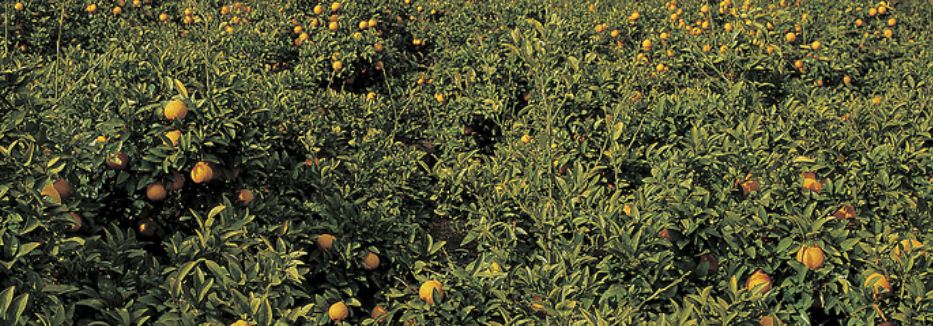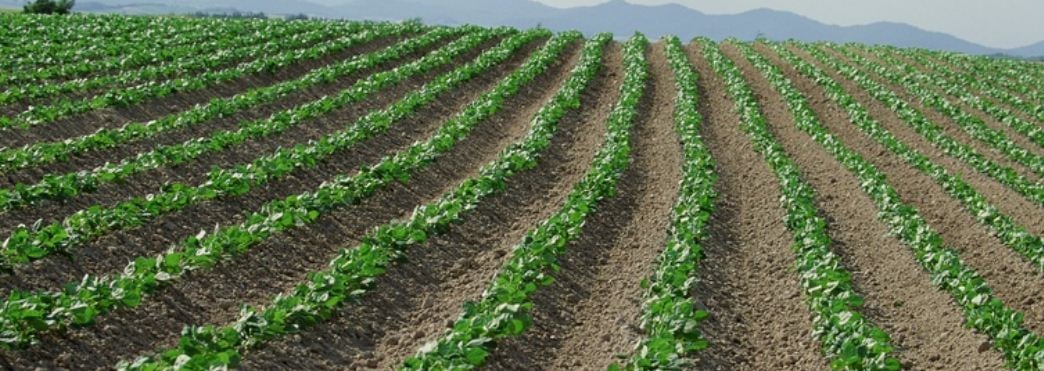Tips on How to Start a Mango Farming

Mango farming is regarded to be one of the leading crop farming. It is been loved by many because it's a good flavor and delicious taste. They have a high level of vitamin A and vitamin C.
There is no need for panicking when you want to venture into mango farming business because it can develop under numerous soil conditions, it's hardly been affected by climate and grows very well throughout the country.
Mango farming business is very profitable, it is not only eating it as a fruit but can also be used in mango juice and other drinks production.
Below are the tips on the important things you must know or do before starting a mango farming business:
1. Know the Varieties
Before planting mango, it is advisable to know the type of mango you want to go for. Some mangoes are high in demand, like the Alphonso mango (sweet mango), Lippens mango, kerosene mango, German mango, and others.
For foreign mango known as Tommy mango and Palmer mango, The Tommy mango is commonly cultivated commercial mango, because it has a long shelve and can also tolerate handling challenges like abrasion, bruising and degradation. It has no sweet or flavor taste. It is been preferred by commercial users because of its juice.
Palmer mango is been harvested immature due to their early coloring, it has a smooth texture with small fibers. The taste is mild and the color is deep cherry and red blush with a green background.
So it is always better to know which one you will like to go for, or you can combine as many types as you want but that is the first decision you have to make before engaging in other things.
2. Get a Location
Getting a good location that has a good and suitable soil will contribute to your mango production.
As much as they can develop in numerous soil types, loamy soil is regarded to be the best soil for growing mango. Mango requires a soil that can hold water and also slowly dry them.
It is important to find an area in your backyard or elsewhere that has good drainage. It is also necessary to think about the future while choosing a location for your mango planting. Your chosen location must not interfere with any buildings, overhead power or underground plumbing.
3. Land Preparation
Mango planting should be done after you must have prepared your land. The land can be prepared by leveling, deep ridging and creating slops that will allow good drainage.
In planting your mango, it is required that you space them so that they can receive enough air and sunlight for proper development and growth. Also cutting down grasses or trees and clear the lands are necessary before planting.
Planting of mango is normally during the month of July to August and also in the months of February to March for proper yield and maximum development.
Growing mango in a clayey soil can be very hard in the beginning but can bear more fruit when it is well established. In order to achieve easy root penetration, the soil of where it is been planted should be well deep and loosened.
4. Propagation Practices
It is important to know how mangoes are been grafted because a grafted mango tree can easily bear fruits and also easy to manage than when is produced as a seedling tree.
Grafting of mango trees in the process of transferring its bearing tree to separate seedling know as rootstock. Mango tree grafting is known to be the most economical and trusted method of mango propagation.
But in the case where you want to plant directly by using the mango seed, you can first of all plant it in a nursery and allow it to germinate about 2- 3 weeks, and then transplant it in a permanent location.
For commercial mango farming, mangoes are usually propagated by the grafting method like epicotyl grafting, veneer grafting, arching grafting, etc. As a beginner, it is advisable to learn the complete grafting techniques and then follow it, because it will be more be useful to you.
5. Pruning
In mango farming, pruning a mango tree is very important because it provides access for branches to develop very well, knowing that branches are where the fruits develop. So pruning mango trees helps to maintain height and also enhances flowering and fruiting.
Also, it is important to prune your mango tree when it is in its infancy so that it will help to maintain the height of the tree. It should be a cut made in the center of a branch of the shoot and it should be about 3 inches.
This will stimulate the mango to develop the main three branches which result in the scaffold of the tree.
Also bear in mind that when those scaffold branches grow to inches long, a heading cut should be repeated. And this should be done anytime the branch reaches to 20 inches in length, in order to stimulate the branching.
Keep pruning for about 2 – 3 years until the tree has a strong scaffold and open frame and once the tree got to a workable height as you want, you can only make one or two thinning cuts per year to aid control growth.
6. Pest and Diseases Control
Pest normally affects the mango, most especially at their tender stage, it is essential to prevent your mango tree from been affected by pest by using the right pest control that can help to effectively control or reduce it.
Taking care of your mango tree is one most factor that determines the production and growth of your mango farming.
Some of the mango diseases include Powdery mildew, Phytophthora, Anthracnose, Apical bud necrosis, black bacterial spot, bacterial flower disease, mango malformation disease, stem-end rots, and others.
The presence of these diseases can be identified easily, but it is advisable to consult your nearby horticulture for more details on mango disease and its symptoms.
While mango pest includes: fruit-piercing moths, Mango shoot caterpillar, fruit-spotting bug, mango stem miner, helopeltis, mango tip borer, red-banded mango caterpillar, Queensland fruit fly, spiraling whitefly, etc are commonly found in mango farming. It is advisable to make use of a particular pesticide for controlling mango pests.
7. Irrigation in Mango Farming
Mango trees are regarded to be strong in nature and require a small quantity of water than other commercial fruit tree development such as banana farming.
So while going into mango farming, irrigation is necessary during an interval of two to three days or normally in the first year of your mango farming.
At about an interval of 10 to 15 days, it is advisable to provide water to those bearing plants. And irrigation can stop after their full growth.
During their flowering stage, proper care is required, and you should stop giving them water. Mango farming can lead to bad quality mango fruit production if irrigation does not stop.
The quantity of water mango needs depends on the type of soil that you are growing as well as the growth of the mango tree.
Therefore, it is necessary to provide constant water to your mango tree, after planting it and at the period of the fruit-bearing stage and flowering.
8. Grafting
Mango planting should be done at the beginning of the rainy season, because of the lower risk of the plant in the rainy season.
Mango farming should be done during the month of July to August and is regarded to be the best season to plant mangoes. And mangoes can also be planted in the irrigation region from February to March.
Grafting is regarded to be the most trusted and economical means of propagating mango. Grafting of mangoes should be done during the warmest months of the year using the night temperatures above 18°C (64°F).
The following grafting methods for mango farming includes chip budding, cleft grafting, and whip grafting.
9. Spacing
Tree Spacing will help to determine how many trees that will be required. Spacing in mango farming affects growth, yield, and management practices.
But always remember to avoid planting trees too close to each other because they will compete with each other for water, light, and nutrients.
The spacing does vary from 10 times 10M to 13 times 13M. But in dry areas, the spacing should be 10 times 10M due to less growth, while in heavy rainfall area of fertile soil, the spacing should be 13 times 13 M due to higher physical growth.
So if you have fertile soil, then it ought to be supplemented at the time of planting it forward and you should prepare a suitable pit. Then about 25kg of farmyard manure should be added along with 3kg of superphosphate and one kg of potash.
Note that the best mango tree plantation distance for row spacing is (about 10 m) and tree spacing is (5 m). So with the guideline, you will be able to cultivate about 70 mangoes plant per plot, and that is the best considered to be the average mango plantation per plot.
10. Manure and Fertilizer Application
The soil should have high essential organic matter such as potash, nitrogen, boron, phosphorus, etc. that will help to block your fruit farm from some diseases.
If your soil has any insufficiency, then it should be boosted at the period of soil preparation to gain increased production.
So for the development of your soil in terms of chemically, and physically, cow dung manure and about 20 tonnes per hectare should be applied.
During the first of mango plantation, there should a provision of about 50 gm of P2O5, Nitrogen of about 100 gm and 100 gm of K2O. This should be added for the following years.
Then provide 1 kg of Nitrogen, 1 kg of K2O and 500 gm of P2O5 to each mango plant. The application of these fertilizers and manure should be in the month of July to August.
Also note that the application of urea to the base of the mango tree at the flowering stage will improve the growth of the mango tree, thereby yielding more fruits.
It is important to apply fertilizers and manure for up to ten years of planting the mango tree, each and every year after planting.
In mango farming, the application of about 40 kg of cow dung manure along with Agozapirillum of about 250 gm each per mango plant is useful for improving the growth of plants.
In Conclusion
Mangoes are regarded as one of the fruits that produce fruits with a period of 3 – 5 years. So you can emerge mango farming with the planting of other vegetables and fruits so that it can help to provide you money while waiting for it to start bearing fruits.
Good production in mango farming business can be achieved easily with the aid of proper care & management and good farm management. Also, note that the most key factor that determines proper fruit production depends on adequate mango pest & disease control.
Moreover with the proper grafting method and good climate conditions, can increase mango production to about 100%.
Also, the application of suitable fertilizers and manure as helps greatly in the mango fruit production. I hope that the above write up will guide you if you are planning of starting mango farming.




